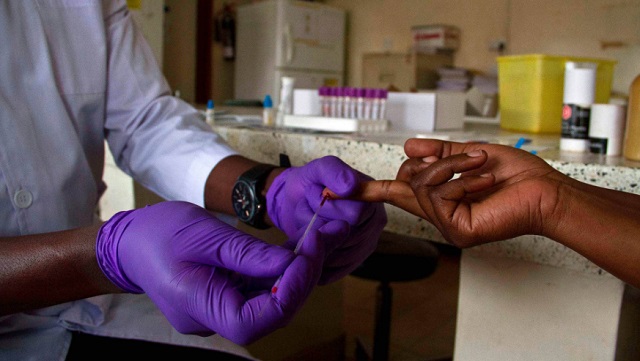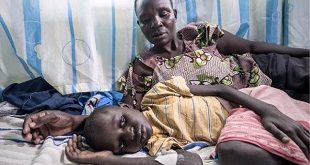
Virus still a burden among young people
Kampala, Uganda | PATRICIA AKANKWATSA | Uganda Network of AIDS Services Organisation (UNASO) wants the fight against HIV/AIDS in Uganda to focus on encourage health-seeking behavior as the disease continues to spread; especially among young people.
While presenting the National HIV/Aids Report, Dr Vincent Bagambe who is the director for planning and strategic information at the Uganda Aids Commission (UAC), said about 17,000 people in Uganda died of HIV/Aids- related diseases, majority of whom were men. He attributed this to poor health seeking behaviour among the men.
Dr Bagambe released the report at a three-day National HIV/AIDS Symposium 2022 organised by Uganda Aids Commission (UAC) at Makerere University Business School Nakawa in Kampala.
He said 17,000 deaths per year is higher than the 2025 target of less than 10,000 deaths per year.said the disease remains a burden in Uganda, with 1.4 million people currently infected.
The report also shows that the infection rate among children born to mothers living with HIV increased from 1.7% last year to 2.7% this year due to poor adherence to treatment.
According to the Report, last year the country registered 54,000 new HIV/Aids infections, of which two thirds were adolescents. The report indicates that girls bear the highest brunt of the new infections.
Prime Minister Robinah Nabbanja, who was the chief guest at the symposium, admitted that HIV/AIDs remain a burden in the country.
“Despite the tremendous success made in the reduction of HIV prevalence from 18% in the 1990s to the current 5.5% the prevalence among women remains at 7.2%. 4.2% among men and the prevalence among adolescents is four times higher,” she said.
While speaking at the Symposium the UAC Director General, Dr. Nelson Musoba, said the Presidential Fast-track Initiative on ending HIV/AIDS in Uganda by 2030 has accelerated the implementation of the test and treat strategy.
He said the target is 90-90-90 among men and youths in general meaning 90% of all people living with HIV know their HIV status, 90% of all people with diagnosed HIV infection receive sustained antiretroviral treatment, and 90% of all people receiving antiretroviral therapy have viral suppression.
Dr. Musoba said the Presidential Initiative emphasises engagement of men in HIV prevention and closing the tap on the new infections, particularly among adolescent girls and young women. He said it has been successful in reducing the disease and proving counselling and drugs to the people infected by the HIV/AIDS.
Dr. Musoba said progress on eliminating mother-to-child transmission of HIV needs to be consolidated and financial sustainability for the HIV response needs to be ensured for institutional effectiveness and a well-coordinated multi-sectoral response.
Dr Baguma noted that although their budget had increased from Shs298b during the last financial year to Shs304 billion, they need more financial support.
U.S. Ambassador Natalie E. Brown said that this fiscal year (2023), the PEPFAR Country Operation Plan budget for Uganda is $400,200,000 or about Shs.1.5 trillion.
“This commitment reflects support for equitable HIV prevention and treatment and care services across the nation, implemented through strategic investments deemed critical for the country’s progress toward controlling the epidemic through collaboration by the PEPFAR team, the Government of Uganda, civil society, and other development partners,”
Injectable PrEP
At the same symposium, Dr Bagambe revealed that this year, the Ministry of Health approved two new HIV prevention methods; the dapivirine vaginal ring and long-acting injectable cabotegravir (CAB-LA) as additional optional drugs for preventing HIV/Aids infection in Uganda.
“The vaginal ring, which women insert in their private parts before having sex, has an antiviral agent that can prevent HIV infection. This option will put HIV prevention in the hands of women. If all women vulnerable to HIV can embrace it, it will be a game changer,” he explained.
Dr Bagambe explained that the person using the CAB-LA method receives one injection after every six months.
This comes after the World Health Organisation (WHO) last year recommended that CAB-LA be offered as an additional HIV prevention option for people at substantial risk of HIV infection.
Currently, HIV-negative individuals at substantial risk of HIV infection rely on pre-exposure prophylaxis (PrEP) where they take a pill daily to lower the risk of becoming HIV-positive when exposed to the virus.
But according to Dr Bagambe CAB-LA as an injectable form of PrEP has proved to be highly effective in reducing the risk of HIV acquisition.
Shakira Namwanje, the head of Research and Policy at Uganda Network of AIDS Services Organisation (UNASO) while addressing the press at the symposium said it is high time that those in the fight against HIV/AIDS developed better products and plans that can deliver prevention options to curb the disease among Ugandans.
“Even with tremendous work that researchers and scientists are doing and how far they have come in regards to the epidemic, many young people continue to acquire HIV every day,” said Namwanje.
****
 The Independent Uganda: You get the Truth we Pay the Price
The Independent Uganda: You get the Truth we Pay the Price


